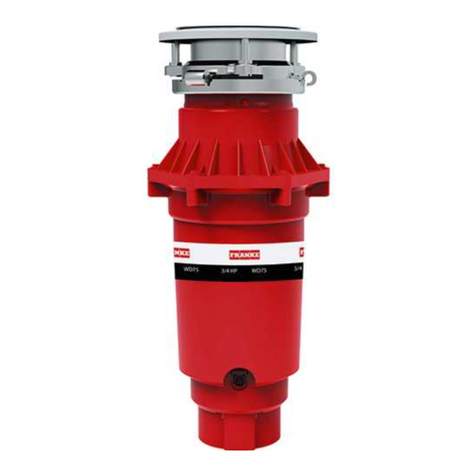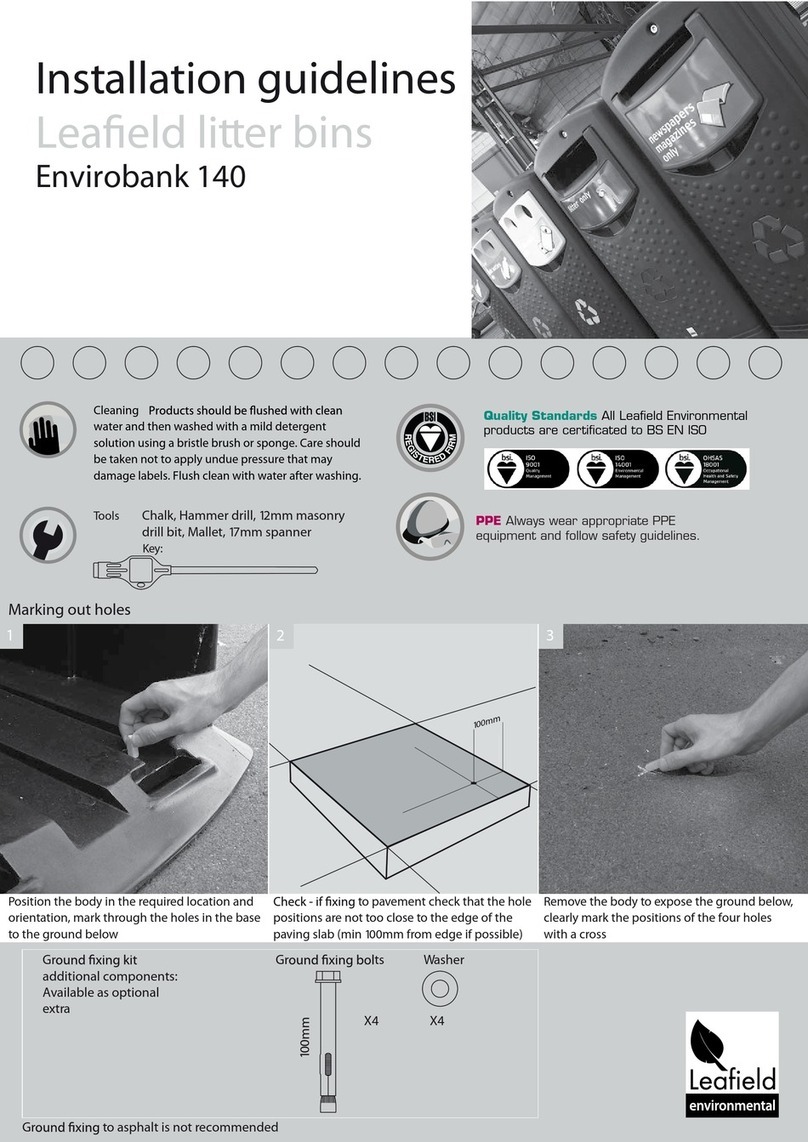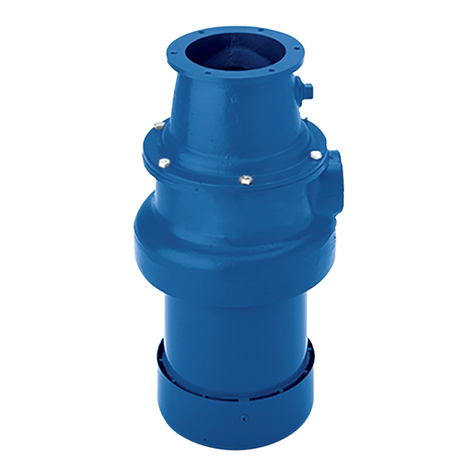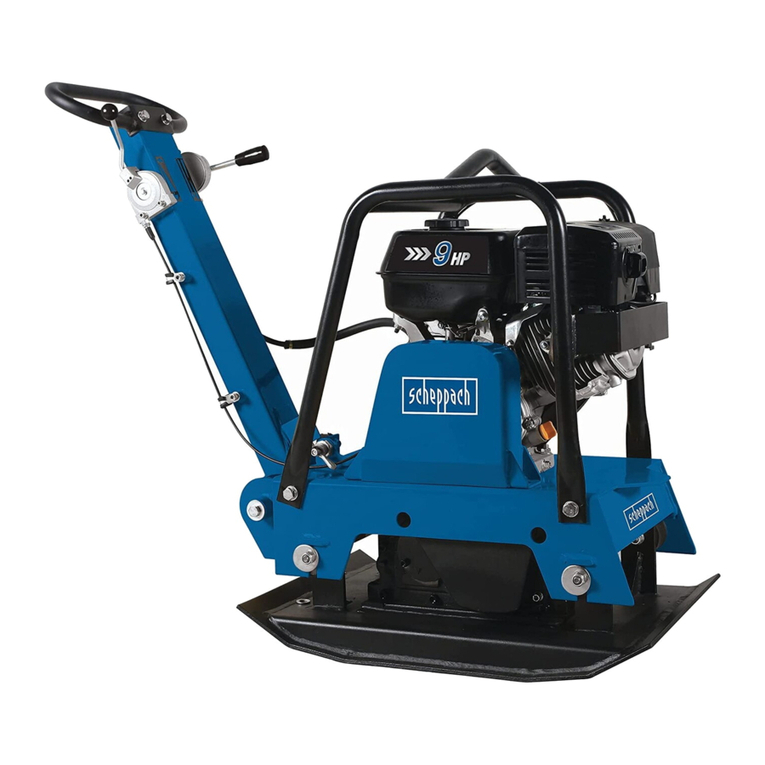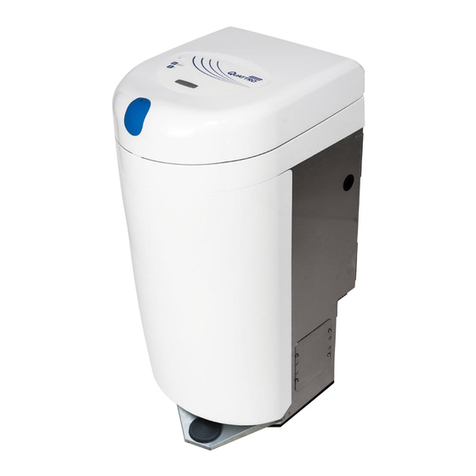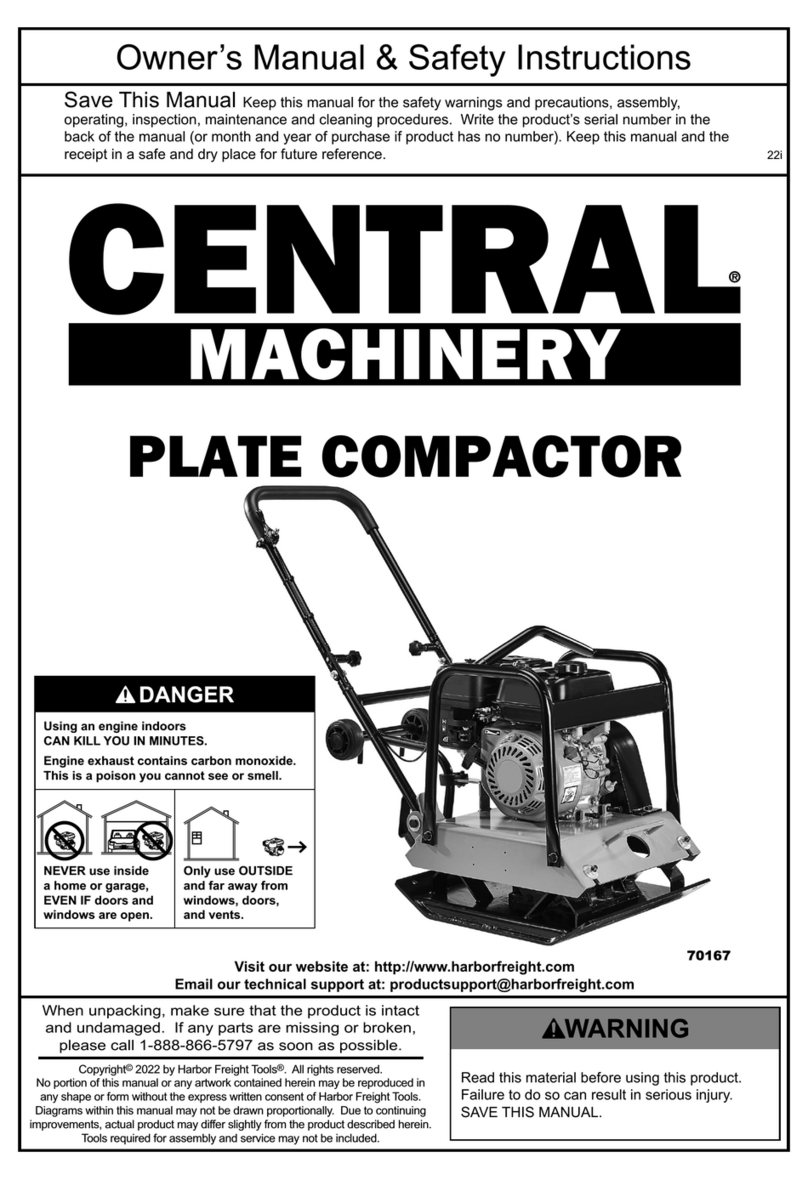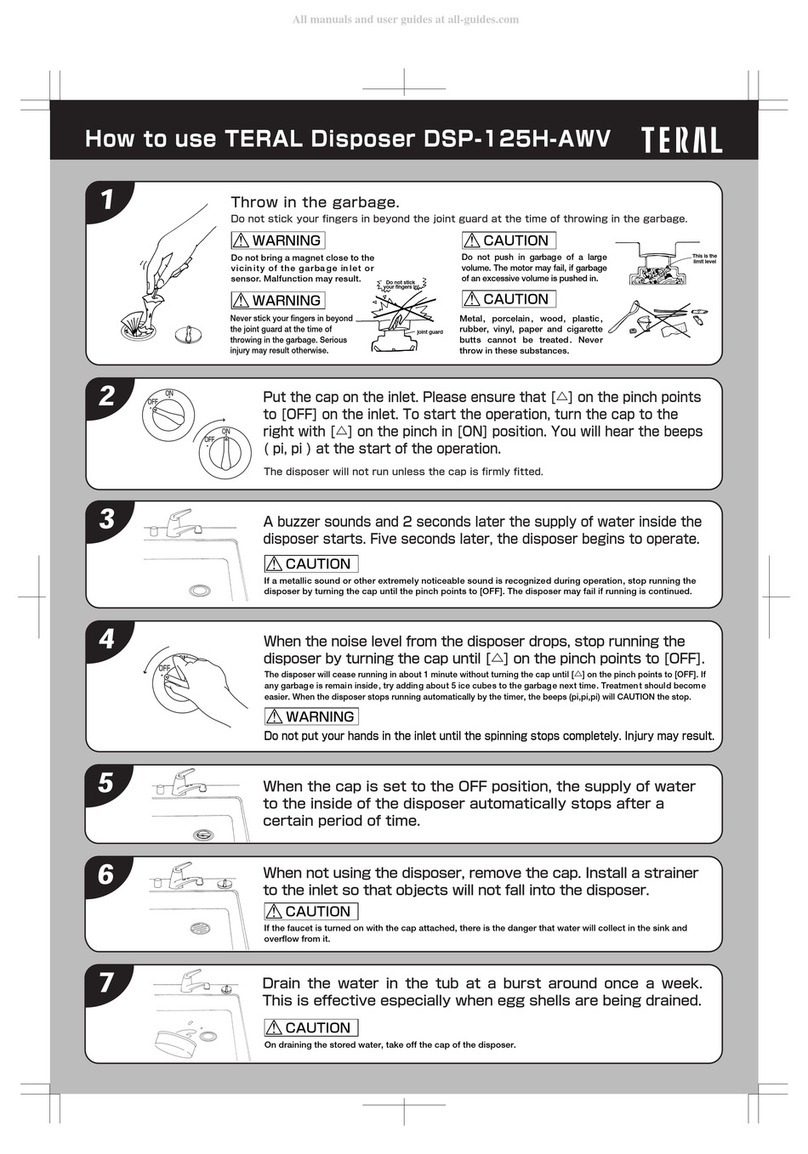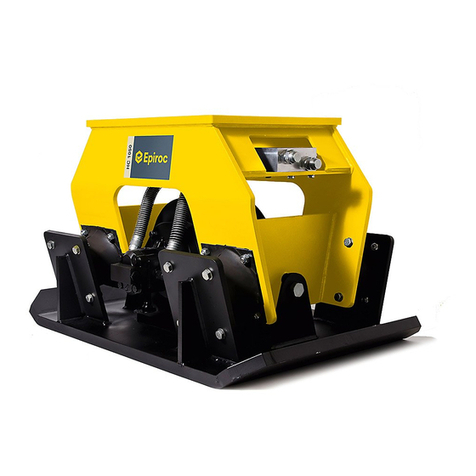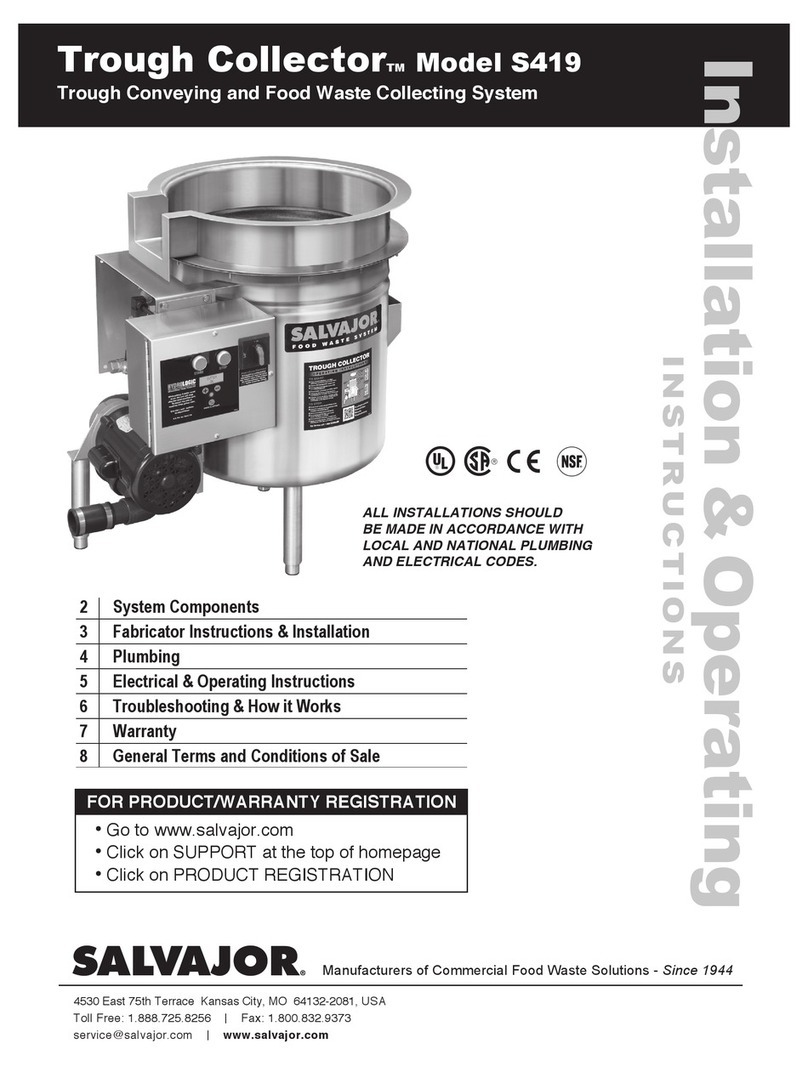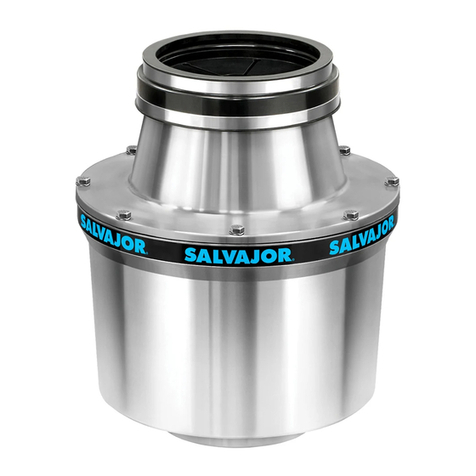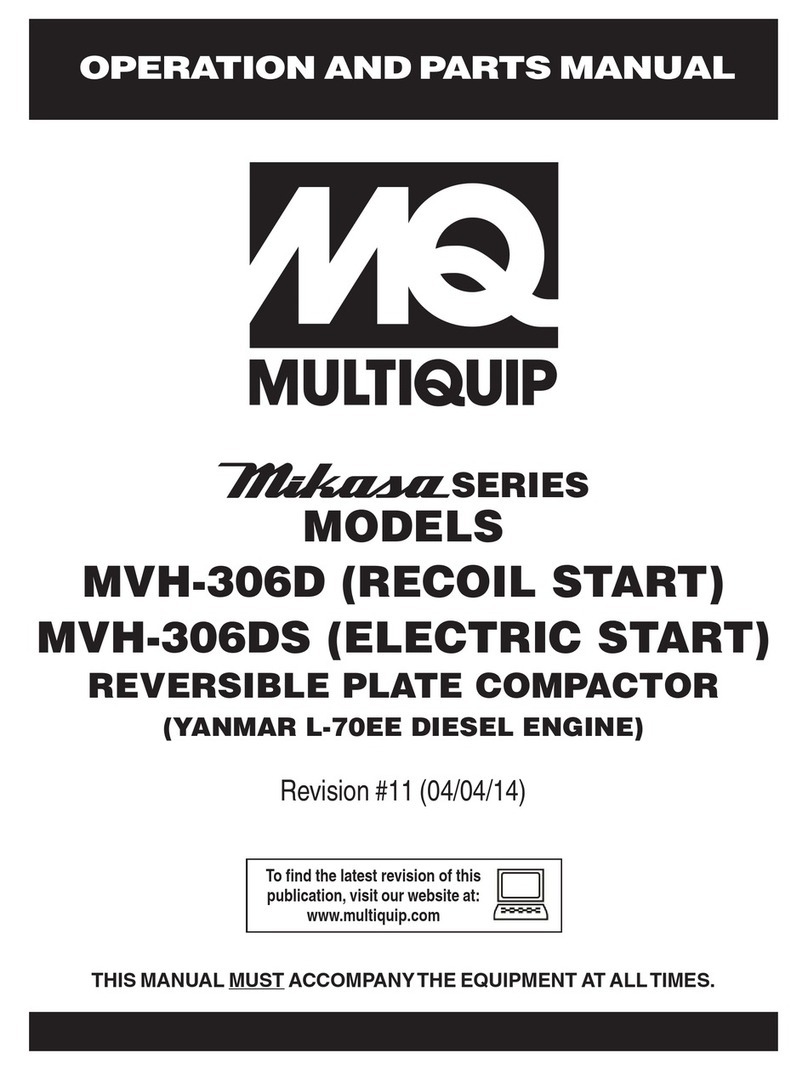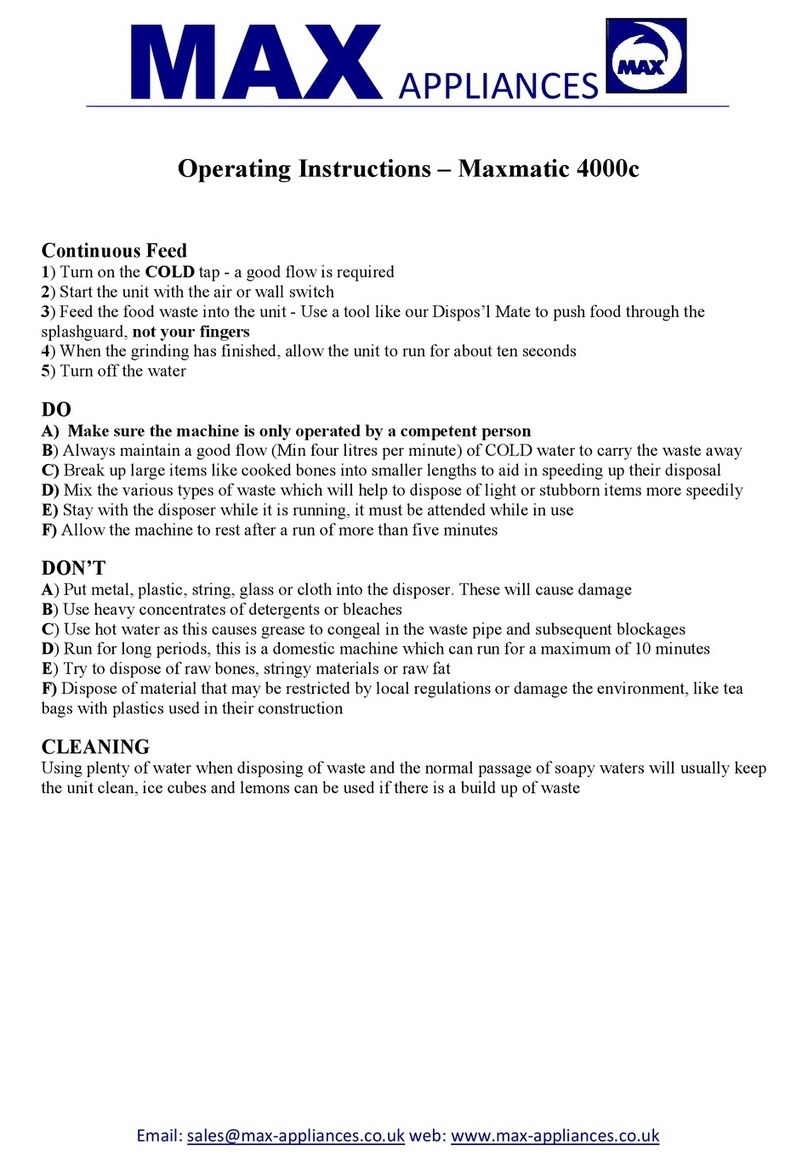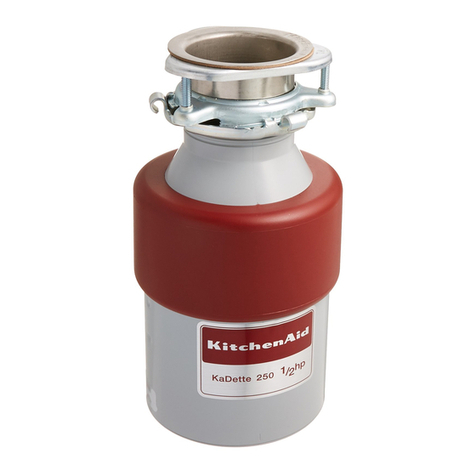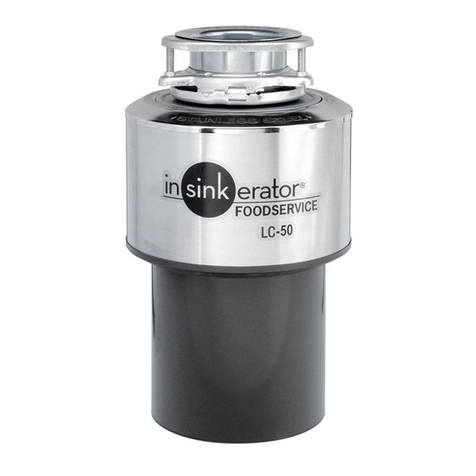
6
Electrical
GENERAL INSTRUCTIONS
Dual voltage disposers are shipped from the factory NOT
connected for a specific voltage. Please refer to the wiring
diagrams on the disposer junction box cover. When
connecting single phase disposers to a reversing control,
refer to the diagram supplied with the control. Salvajor
disposer cutting elements are designed to operate in
either direction.
Use water tight conduit and fittings to make connections.
Caution: Be careful not to pinch wires when replacing junction
box cover.
For new installations, an approved control will need to be
mounted in the dish table with an optional bracket. Power
will have to be run to a solenoid for incoming water.
NOTE: The RESET button is located on the bottom of the disposer.
TEST PROCEDURE
1. Check to be sure the disposer cutting teeth are free of
foreign objects.
2. Turn the disposer on and determine that the cutting
elements rotate freely and that water flows automatically.
3. Check the mounting assembly and plumbing connections
for leaks.
4. If disposer fails to operate:
A. Turn off power.
B. Check wiring connections.
C. Determine if the RESET button has tripped.
Reset by hand only.
DANGER: If disposer stops, DO NOT look for the cause until the
startin control is turned OFF and the power is turned OFF.
Consult Operatin Instructions.
Model 200
115 Vol s 1 Phase 24.0 Amps
208 Vol s 1 Phase 12.1 Amps
230 Vol s 1 Phase 12.0 Amps
208 Vol s 3 Phase 6.6 Amps
230 Vol s 3 Phase 6.0 Amps
460 Vol s 3 Phase 3.0 Amps
Model 300
208 Vol s 3 Phase 8.8 Amps
230 Vol s 3 Phase 8.0 Amps
460 Vol s 3 Phase 4.0 Amps
Model 500
208 Vol s 3 Phase 13.8 Amps
230 Vol s 3 Phase 12.5 Amps
460 Vol s 3 Phase 6.3 Amps
Model 750
208 Vol s 3 Phase 19.8 Amps
230 Vol s 3 Phase 18.0 Amps
460 Vol s 3 Phase 9.0 Amps
Model 75
115 Vol s 1 Phase 17.8 Amps
208 Vol s 1 Phase 9.9 Amps
230 Vol s 1 Phase 9.0 Amps
208 Vol s 3 Phase 4.2 Amps
230 Vol s 3 Phase 4.0 Amps
460 Vol s 3 Phase 2.1 Amps
Model 100
115 Vol s 1 Phase 18.6 Amps
208 Vol s 1 Phase 10.2 Amps
230 Vol s 1 Phase 9.3 Amps
208 Vol s 3 Phase 4.9 Amps
230 Vol s 3 Phase 4.5 Amps
460 Vol s 3 Phase 2.3 Amps
Model 150
115 Vol s 1 Phase 22.9 Amps
208 Vol s 1 Phase 11.8 Amps
230 Vol s 1 Phase 11.6 Amps
208 Vol s 3 Phase 6.2 Amps
230 Vol s 3 Phase 5.6 Amps
460 Vol s 3 Phase 2.6 Amps
Model 75 (3⁄4H )
Model 100 (1 H )
Model 150 (11⁄2H )
Model 200 (2H )
Model 300 (3H )
Model 500 (5H )
Model 750 (71⁄2H )
Full Load Amps
MAKE ALL INSTALLATIONS IN ACCORDANCE
WITH LOCAL AND NATIONAL ELECTRICAL CODES.
WIRING DIAGRAMS
SINGLE PHASE 115 VOLT
SINGLE PHASE 208 VOLT
SINGLE PHASE 230 VOLT 3 PHASE 208/230 VOLT
TO REVERSE ROTATION: Interchan e #5 & #8 (Sin le Phase Only)
USE CONTROL PANEL WIRING DIAGRAM when usin Salvajor Controls
(Models ARSS, ARSS-LD, ARSS-2 or MRSS) (Sin le Phase Only)
3 PHASE 460 VOLT
